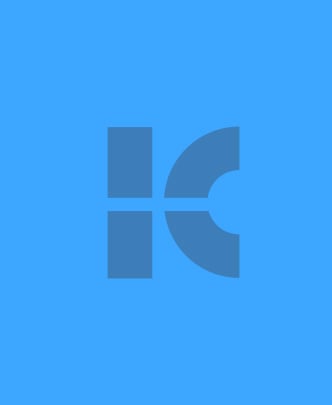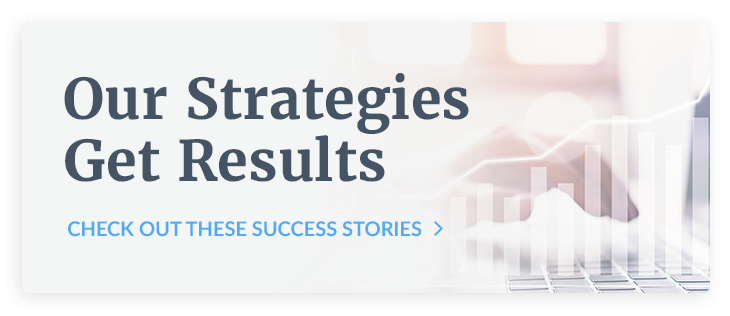
Beyond the eBook: What Is an Inbound Marketing Campaign?

 When you experience any marketing challenge—slow lead-generation, flat product demo signups or few qualified leads for sales, for example—your first inclination may be to create a content offer like an eBook, publish it with a landing page, send an email promoting it to a list and hope it moves the needle in the right direction.
When you experience any marketing challenge—slow lead-generation, flat product demo signups or few qualified leads for sales, for example—your first inclination may be to create a content offer like an eBook, publish it with a landing page, send an email promoting it to a list and hope it moves the needle in the right direction.
That’s one idea, and it worked for a long time. It’s the conventional inbound B2B marketing strategy to which many marketers default. Having said that, the day of gated content offers has largely come and gone; it’s far from the only tactic available today to reach your marketing goals. What's more, this content offer-driven approach is not in and of itself an inbound marketing campaign; it’s merely a [multi-faceted] one-off marketing action. A campaign is—and achieves—so much more than one-off marketing actions.
While eBooks and whitepapers and ultimate guides have been the stalwart, go-to content solution for many companies, and still have their place, you have many varieties of content at your disposal—some of which might, in fact, help you meet your objectives far better than another gated content offer. For example, infographics, ROI calculators, webinars, video, podcasts, product demos, courses, data-driven research and interactive web pages, to name a just few possibilities.
Inbound Marketing Campaigns Defined
Often in the day-to-day demands of a contemporary marketing department, the concept of running marketing campaigns gets diluted or diminished. That’s a big oversight because thoughtful, multi-faceted marketing campaigns as opposed to one-off marketing events can greatly improve your results—including more and better leads—as well as help you attain longer-range marketing objectives sooner and gain better ROI. It’s a smart move to keep campaigns central to your marketing strategy—replacing most one-offs with a bigger, cohesive plan.
So, what is a campaign? HubSpot provides a simple definition: “Inbound marketing campaigns are concentrated efforts that align all of your marketing channels around a single message and goal. It starts with a marketing offer—something valuable and relevant for your audience that you promote through your marketing channels. Then, you nurture the leads from that offer and move them along your marketing funnel so they can become your customers. And don’t forget to measure and analyze your campaign.”
In other words, instead of merely a piece of content, a landing page and an email, a campaign is a full-bodied marketing event that aims for both immediate action and long-term results. Here’s an example of building out a one-off event into a full-blown campaign:
- Create a strategic piece of content
- Publish a landing page on your website for your content offer
- Send an email announcing to your list
- Promote the content via your social platforms on a regular schedule for a defined period of time
- Add the offer to the ad rotation in your paid media strategy, if desired
- Create Facebook and/or retargeting ads
- Run sponsored updates and text ads on LinkedIn
- Design a follow-up email to send to anyone who hasn’t downloaded the content yet
- Repurpose the content by turning it into a webinar, blog post, infographic, etc.
- Measure your results and fien tune the campaign accordingly
- Add new pieces of relevant content for different phases of the customer lifecycle over time
What Should Be Included in an Inbound Campaign?
Every campaign should align with your overall business goals. For example, a hospital may want to grow its cardiology, pediatrics, women’s health and diabetes management service lines. Those four services can become quarterly campaigns. Same goes for a software company that wants to grow its recruiting, payroll and employee performance product offerings.
Once those target areas are identified, there are dozens of inbound marketing elements you can use to reach buyers at all stages of the buyer's journey for each campaign. Here are a few ideas to inspire your next inbound marketing campaign planning session.
Goal 1 — Lead Generation
Community-building
Social media platforms provide great opportunities for building community around your brand, solutions or sector. Launching campaigns that foster community on social platforms builds positive engagement at the top of the funnel, and also improves conversion rates further down the funnel. Community-building efforts can include a wide range of activities, such as contests, live chat or expert panel discussions.
Event registration
Industry events are tried-and-true venues for meeting both new prospects and engaging with existing customers. They don’t have to be in-person to be effective, especially now, after the pandemic. Virtual events can work just as well, and have the added benefit of giving you a wider reach. Events can be promoted far and wide—from email to social to paid media. Not only will they drive awareness and engagement, but also build your brand as an industry leader.
Goal 2 — Lead Nurturing
Welcome efforts
Don’t waste the opportunity to reach out with a welcome message to new subscribers. When new leads opt in to your blog or content delivery system, it’s an ideal time to introduce them to your company, brand and products. Since they just joined, these contacts are typically more receptive to your messaging.
Welcome efforts could include a series of carefully crafted and timed emails that introduce them to other content available on your website—and, of course, to your products and services. If you hit them with the right messages at this time, they’ll be likely to download more content and engage more deeply with your brand.
Mid-funnel information
Similar to welcome efforts, the focus here is specifically on educating your new prospects about your company, industry and solutions that speak to their specific challenges. Sharing relevant and valuable educational content is the heart of this (or any) action. Mid-funnel content could include reports, white papers, webinars and free online mini courses. The immediate goal of educating your leads is to develop that stronger relationship with your prospects. The long-range goal is to get these users and prospects ready to talk to someone from your sales team.
Goal 3 — Convert Leads
Consultations or product demos
A demo or consultation is the fundamental bottom-funnel marketing conversion. At the bottom of the funnel, you should already have rich knowledge about your prospects thanks to successful inbound campaigns upstream—and you should be able to use that rich prospect data to create compelling demo offers. These efforts should be targeted at accounts that are a good fit, have multiple contact engagements with your brand and—most importantly—have recently shown interest in your solutions. A demo ad can be run across a number of channels, including email, phone calls, social and display ads.
Retargeting
Retargeting is an effective way to reach people who have already shown interest in your products via visits to your website. Many B2B companies opt to retarget visitors with either generic brand messages or content offers. However, more advanced retargeting uses different ads depending on the page the prospects visited. This approach leverages your ability to gather greater insight on your visitors and, thereby, create more highly targeted ads. For example, if a visitor viewed only your home page, a brand message may be appropriate. If a prospect visited your blog, it may be smart to post an ad for a special report or case study. If a visitor looked at your pricing page, you could point them to a product demo request.
Goal 4 — Customer Retention
New customer onboarding
Historically overlooked, new customer onboarding is becoming a more prominent mode of acquiring new customers and engendering loyalty with existing clients. Give important guests the royal treatment: Onboarding is a concierge service that places your new customer or client front and center, delivering value immediately after the sale.
You’ll introduce them to all of the essential functions of your business and other team members they could reasonably expect to engage with during their time as your customer. Make sure they understand your business on a deeper, more functional and practical level, such as where to get answers to commonly asked questions, how to quickly get in touch with your support team and how to stay connected to all of your product and service updates.
Customer loyalty and retention efforts
Once you’ve converted a prospect into a new customer, it's important keep them happy. Referrals are always a low-cost, shorter runway acquisition method, so delivering value and an outstanding customer experience is an investment into your business development efforts.
A great way to accomplish this goal is by setting up ongoing customer loyalty communications. This isn’t merely about sharing product benefits: it’s more about providing deeper knowledge, such as pro-level tips and tricks, so they continue to derive value from your products or services. It involves contact in proactive and strategic ways, so they feel well supported after the purchase and they're fully onboarded. This type of marketing effort also serves another vital purpose: it gives you the ability to capture more activity data from your customers, including identifying potential upsell opportunities or at-risk customers. With these insights, you can build a robust customer retention program that lends itself well to both sales and future marketing efforts. Retention is a marketing campaign that never stops.
Inbound campaigns are essential workhorses for sustainable long-term marketing and sales results that better withstand market shifts or economic conditions. Much more than one-off marketing tactics, campaigns generate the power to deliver both immediate and long-term results. Launching one or more campaigns using strategic content will deliver results that far exceed simply flinging another eBook or ultimate guide out into the world.
At Kuno Creative, we've been at the forefront of developing leading edge marketing campaigns for over 20 years. Our RevOps and HubSpot strategy teams are committed to the success of our HubSpot clients, while our strategists, SEO and paid media experts and brand journalists help inform a campaign-driven approach that feels like it was designed just for you because it was designed for you, with ongoing consultation and reporting that helps sustain sales and marketing momentum and keeps our relationship with you as strong as it was when you first signed on.
If you're struggling with your marketing efforts and need to see the needle move in the right direction, schedule a consultation and a veteran member of our team can identify how we can help and chart a course toward success.





